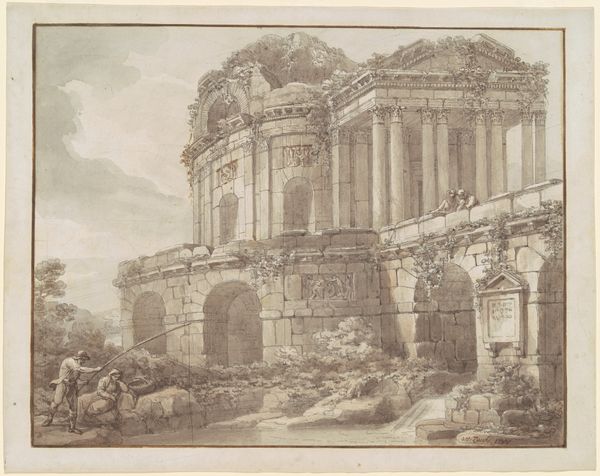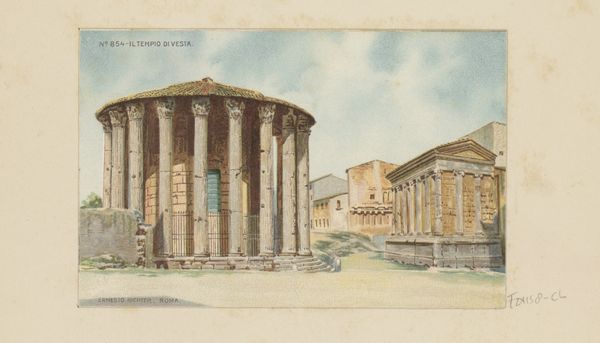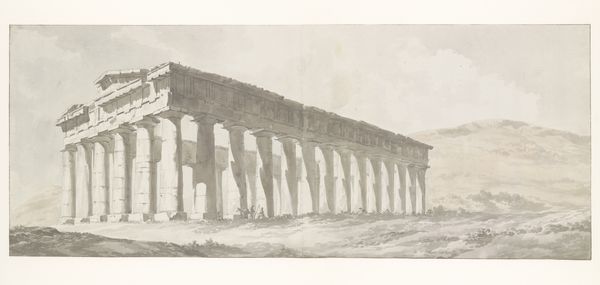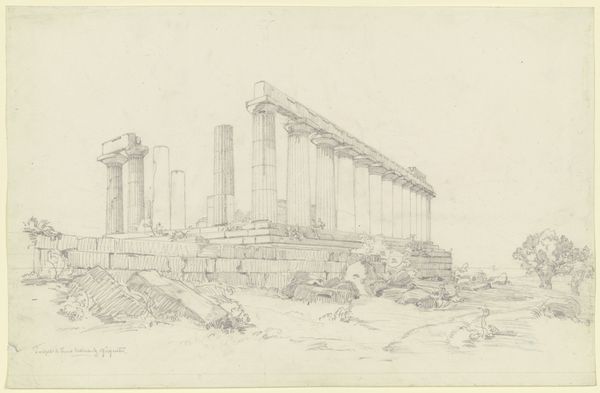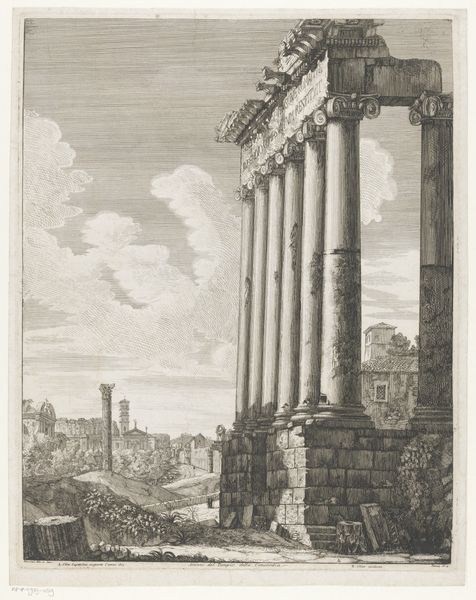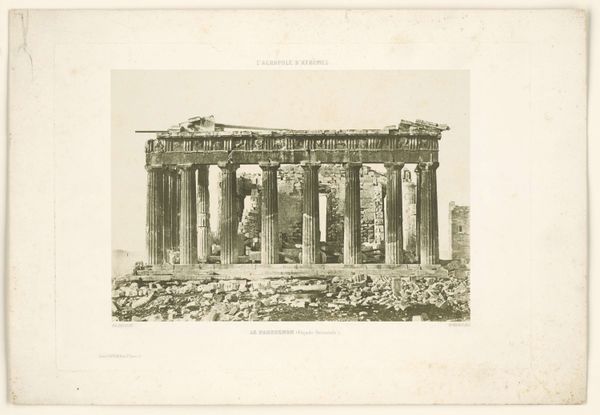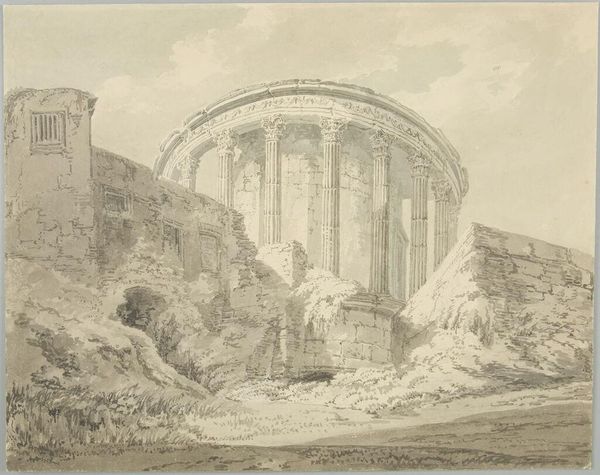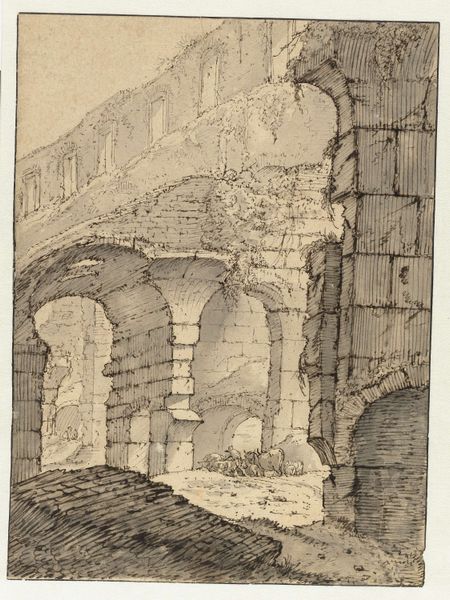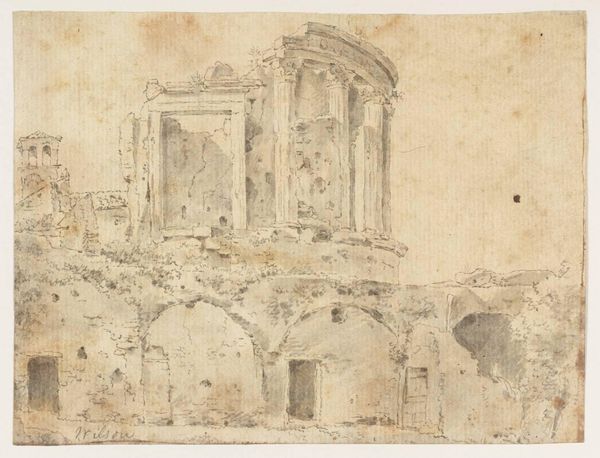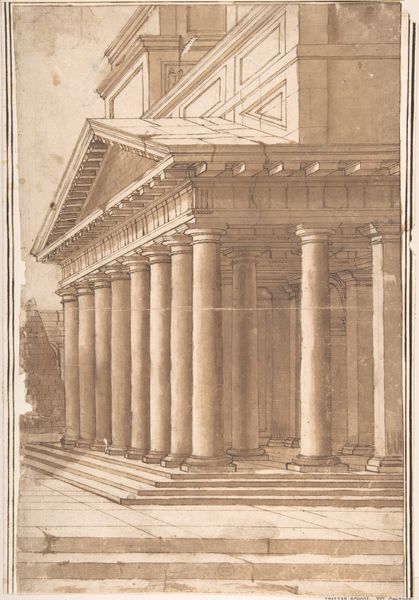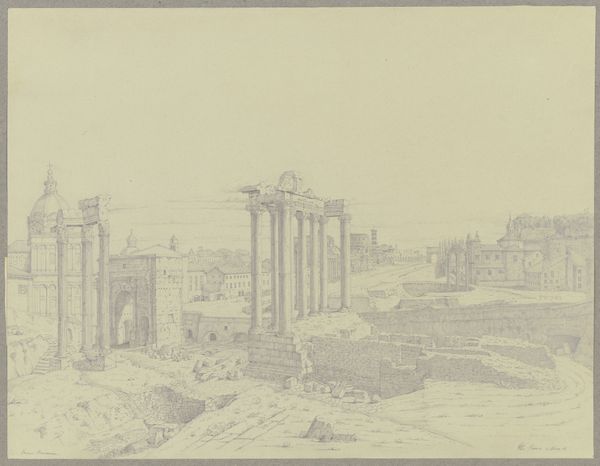
Dimensions: support: 245 x 357 mm
Copyright: CC-BY-NC-ND 4.0 DEED, Photo: Tate
Curator: Charles Gore, born in 1729, rendered this watercolor titled, "The Temple of Ceres, Segesta". It's currently housed in the Tate Collections. Editor: My first impression is one of grand, solemn decay. The temple evokes a powerful sense of time and ruin. Curator: Indeed. The temple, dedicated to Ceres, the Roman goddess of agriculture, embodies fertility, and, in that sense, the cycle of life, death, and rebirth. Note how Gore depicts the material's deterioration, evidencing the passage of time. Editor: And look at the pillars; their Doric simplicity speaks of strength but also a kind of stoicism. The imagery of a ruined temple often symbolizes lost empires and faded glory. Curator: Yes, the very act of representing it becomes a commentary on labor, skill, and societal values. The artist's hand, mimicking the work of ancient builders. Editor: In a way, the ruin is a potent symbol, representing the transience of earthly power. The earth endures, while monuments crumble. Curator: It is fascinating how Gore captured that interplay of permanence and impermanence within the material itself. Editor: The layers of meaning embedded here reveal so much about humanity’s place in time, wouldn’t you agree? Curator: Absolutely, the physical rendering and its symbolic meaning, inseparable and quite thought-provoking.
